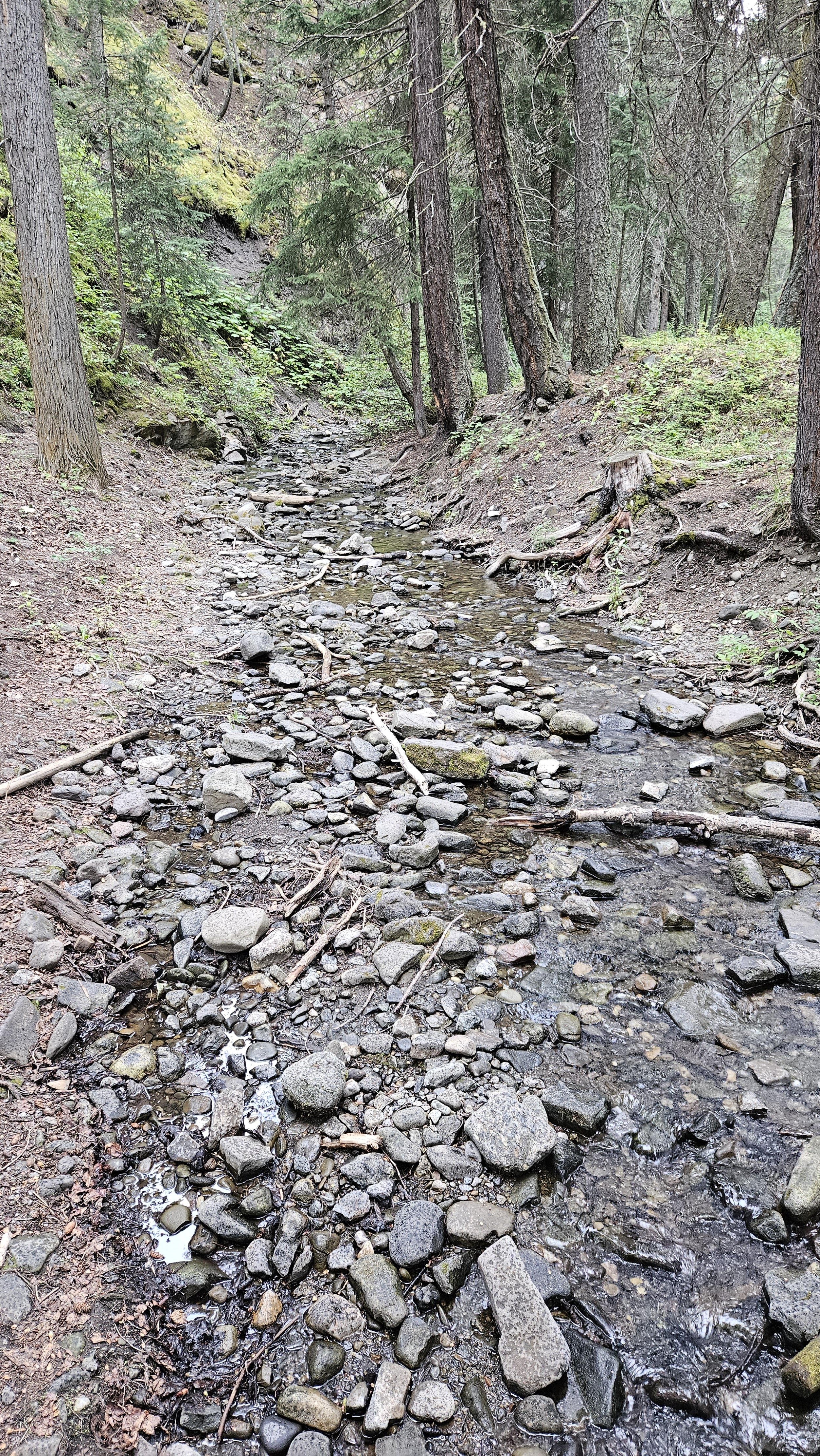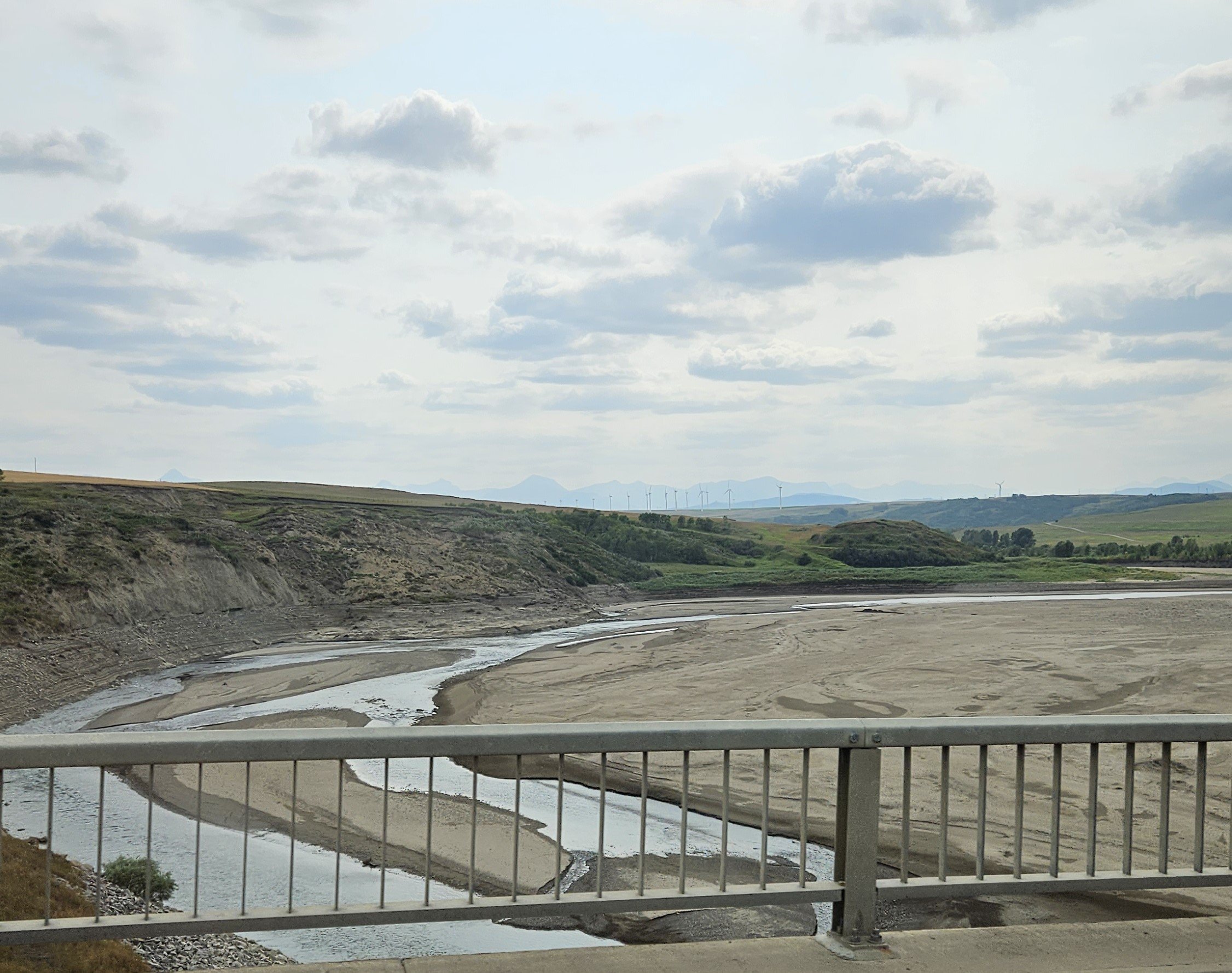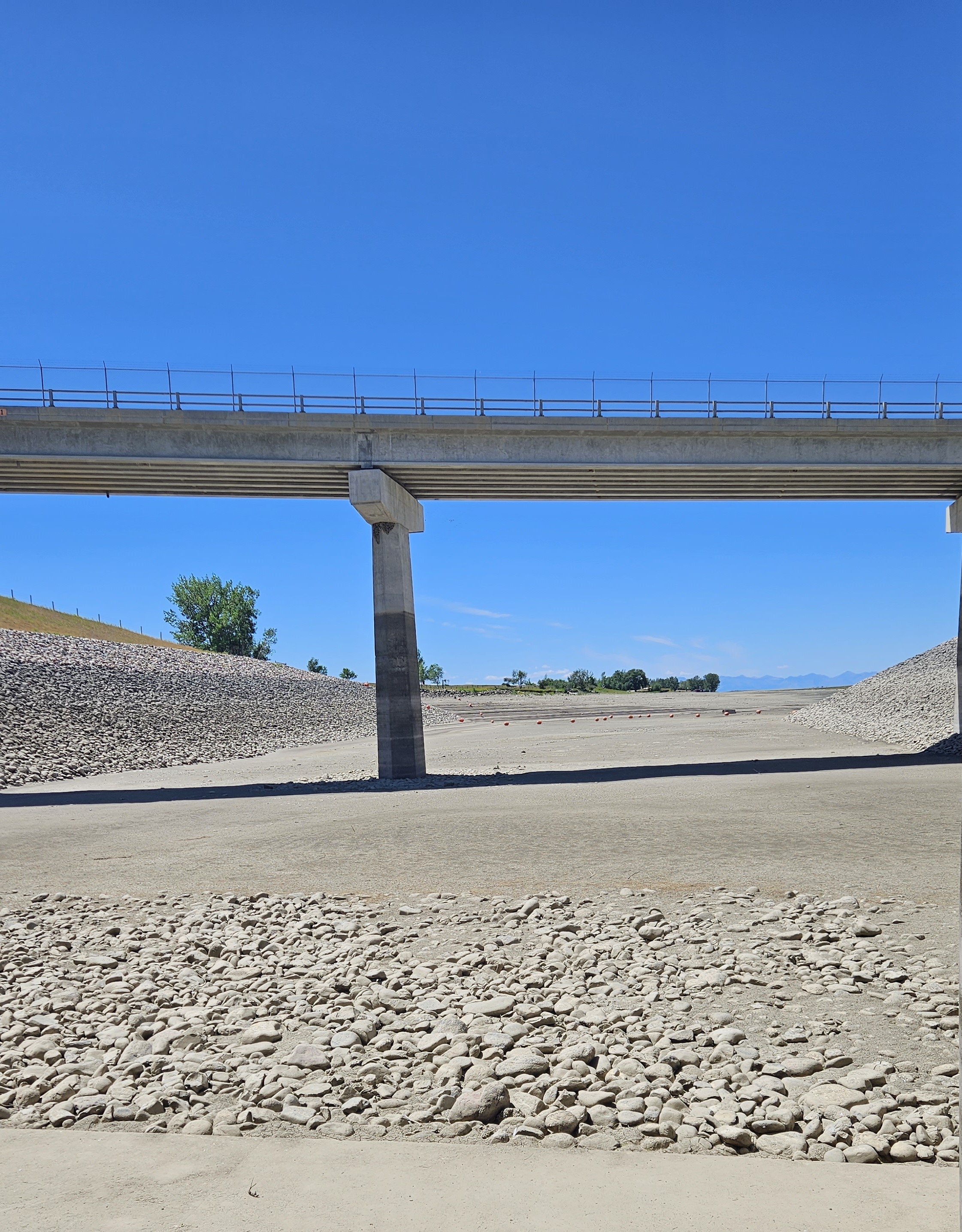by Maria Albuquerque, OWC Watershed Stewardship Assistant
“It’s hot enough to fry an egg on the sidewalk!” isn’t a phrase that feels too far-fetched this year, as the summer heat raises temperatures and lowers water levels throughout the province. Public swimming pools are full and air conditioners have been constant companions as Southern Albertans work to stay cool. There have been so many hot days that I have sometimes caught myself thinking that I am back in Brazil, in my hometown. This is Maria Albuquerque, the new Watershed Stewardship Assistant at OWC, and I’m going to share what I, a new resident to Southern Alberta, have been learning about the current drought and its impacts on the Oldman watershed and the southern region of our province.
You may have noticed signs of the drought conditions: gardeners cursing as their flowers wilt, and shrivelled berries to be shared amongst the birds and bears while they hunt for juicier snacks. These experiences have raised concerns about the Oldman watershed’s moisture levels and the state of our local water bodies. I have been left wondering, what effects has all of this heat had on the Oldman watershed and its residents?
Left: Nez Perce Creek, Coleman, AB, August 9, 2023. Photo by Maria Albuquerque.
Right: Wally’s Beach, July 26, 2023. Photo by Jon Martin.
In the Know About H2O
A previous blog discussed the water forecast for this summer and the factors that affect the water supply, including rainfall and snowpack. As a good Brazilian with a lizard soul, I have enjoyed countless sunny days outdoors. However, this year’s drought has contributed to a water shortage in our watershed as well as in the Bow River and Red Deer basins, with recorded volumes much below average as reported by Alberta River Basins.
Most of the Oldman watershed’s surface water comes from snowpack and rainfall in the mountains, both of which contribute to Southern Alberta’s reservoirs. Unfortunately, this year’s snowmelt runoff was not as significant, and the Lethbridge area only received 50.3 mm of rainfall throughout June and July. Since then, precipitation has been below and much below average. A potential contributing factor to these conditions are the El Niño warming patterns, although this data collection will not be completed until the end of the year by the National Oceanic and Atmospheric Administration. This has resulted in low levels of water flow and storage, impacting both urban and rural consumers as well as the environment.
The water shortage is not only a Southern Alberta problem, but a global concern. According to World Resources Initiative’s (WRI) newest update on the global water supply, “25 countries - one-quarter of the world’s population - are currently exposed to extremely high water stress annually.” WRI has stated that half the world’s population is exposed to water stress for at least one month per year, and by 2050 that number could be closer to 60%.
Is It All Water Under the Bridge?
Like Simon and Garfunkel, we too have recently witnessed a bridge over troubled water. The Oldman and Waterton reservoirs are each currently sitting at 58% of full capacity, and the St. Mary’s reservoir is at 4% volume of total capacity. Collectively, the ten reservoirs in the Oldman basin are on average at 59.1% full capacity. According to the Alberta Rivers Basin website, the Oldman basin’s water supply for August and September is expected to vary from much below to below average. It is normal for reservoir levels to be low at the end of summer, but these numbers highlight how urgently we need substantial and sustained rainfall to recover the basin’s water levels.
Left: Oldman Reservoir, August 16, 2023. Photo by Maria Albuquerque.
Right: St. Mary Reservoir, July 26, 2023. Photo by Maria Albuquerque.
Not only have our reservoirs been impacted, but our soil moisture is also feeling the heat.The Government of Alberta’s Agricultural Moisture Situation Update for August 02, 2023 stated that current soil moisture reserves are shown to be below normal for most of the Oldman watershed, with extremely low to driest conditions near Kainai Nation and the confluence of the M.D of Willow Creek, M.D of Pincher Creek, and Cardston County. Several counties and municipal districts have declared a state of agricultural disaster within their boundaries, meaning that weather conditions have been poor enough to have major negative effects on the agricultural industry.
Reserving and Conserving Water
The Alberta government has been proceeding through the stages of a provincial water shortage advisory as a drought response for the protection and management of the water sources.
Currently, Alberta is in water shortage management stage 4. In this stage, a significant number of licensees, agricultural producers, and residential users in the water management areas are affected and are unable to divert water. Water licensees are advised to review the conditions of their licences while no new Temporary Diversion Licences (TDL) are issued (a TDL allows holders to divert surface and/or ground level water from water bodies).
As of August 17, 2023, there are 32 water management areas in the province under a stage 4 water shortage advisory, five of which are in the Oldman watershed.
Castle River, Pincher Creek, Upper Oldman River, Willow Creek, and Lee Creek are the water management areas under stage 4 water shortage in the Oldman watershed. Image: Alberta Rivers App.
The Nature of Things
Westslope cutthroat trout. Photo by Jonny Armstrong.
Sufficient water levels help to maintain the watershed’s biodiversity. These largely treeless fields in Southern Alberta once made me think they were mostly dry land with a few bushes. I was fascinated to learn and witness how I misinterpreted this rich land with so much wildlife and native plants. They truly hide an oasis along the Oldman River, with cottonwood forests and many species of wildlife and fish. The Oldman watershed’s biodiversity has faced challenges due to habitat loss and human development, as well as competition from invasive species. One of Alberta’s native fish, the westslope cutthroat trout, currently occupies only 5% of its historical range. Trout thrive in cold, clean, and connected waterways; a water shortage is one more stressor for these and other populations that inhabit the watershed. By respecting the angling restrictions and recommendations, you are not only helping species at risk but supporting stream health and riparian areas.
Early Bird Gets the Fish
As of July 26, 2023, angling restrictions have been put in place for parts of Southern Alberta to support the health of our fisheries. Anglers will still be able to fish, but not between 2 pm -12 am. During this time of the day, the water temperature can rise causing stress to fish and increase chances of summer kill. If the temperature exceeds 20°C, maybe it is a good idea to come back another day since warm waters reduce the fish’s chances of surviving after being caught and released.
Angling Restrictions Zone map from My Wild Alberta.
Making Hay While the Sun Shines
Before moving to Canada, I never realised that Alberta is one of the largest food producers in North America with such freezing and lengthy winters. I have since learned that the Oldman watershed is actually home to Canada’s Premier Food Corridor! Although winters are cold, ranchers and farmers have found ways to efficiently use the summer season to produce an abundance of food every year.
I have learned that irrigation plays a key role in food production. Currently, irrigated farms produce more than 30 different crops every year. Irrigated land in Alberta provides 46,000 full-time equivalent jobs to Albertans and plays a key role in the southern region’s economy. A decline in crop productivity can put workers at risk of losing their jobs and can create economic stress. This year, as crops mature and harvest begins, the irrigation demand is expected to decline, which should help reduce the stress on our rivers.
Alberta is also number one in beef production in Canada, with more than 1.5 million beef cows grazed in the province. The cattle industry has significantly contributed to Alberta’s GDP, and in 2019 it employed 23,300 Albertans. Alberta has launched temporary livestock water assistance for producers who have an urgent need for water for their livestock.
Working with Water
Water is crucial for the outdoor lifestyle of Albertans, used for gardening, agriculture, manufacturing, and recreation. Evidence of a water shortage may not be apparent depending on where you are located and how you utilise water in your daily life. Water restrictions vary between urban and rural centres, and each municipality has their own requirements that help to lessen water usage; additionally, these restrictions generally apply to outdoor water usage only. Currently, the City of Lethbridge is asking residents and businesses to conserve water with several watersheds experiencing low average water supply. Check your county, town, or city website for more information on local water restrictions.
Here are some tips to reduce water consumption:
Prairie Urban Gardens and xeriscaping are great options for reducing water usage while maintaining a beautiful yard.
Operating agricultural pivots using low-pressure sprinkler heads can help irrigate crops while reducing pumping demands
Using covered troughs and maintaining float valves for watering livestock can reduce water loss while keeping animals healthy.
Avoid building rock dams across streams - While they may seem harmless, these can affect flow rates and fish habitat downstream.
Keeping Our Blue Planet Blue
The impact of the water shortage goes beyond our individual and municipal water supply; it affects the entire Oldman watershed and neighbouring basins. Drought impacts the food we grow and consume, job opportunities, biodiversity, and ecosystem services like fire protection. While we wait for more moisture, we can collaborate to lower water consumption, stay informed, and work on solutions for reducing the impacts of a water shortage. Alberta’s Water for Life Strategy and Action Plan sets the collaborative foundation for all sectors to work cooperatively, and are critical documents that guide much of our province’s water programs.
Our semi-arid corner of Southern Alberta is at increased risk of extreme weather conditions and drought, but there are many different opportunities and solutions to reduce our water usage in an effective and positive manner. Join OWC’s volunteer email list to help increase our watershed’s resilience to drought!

















